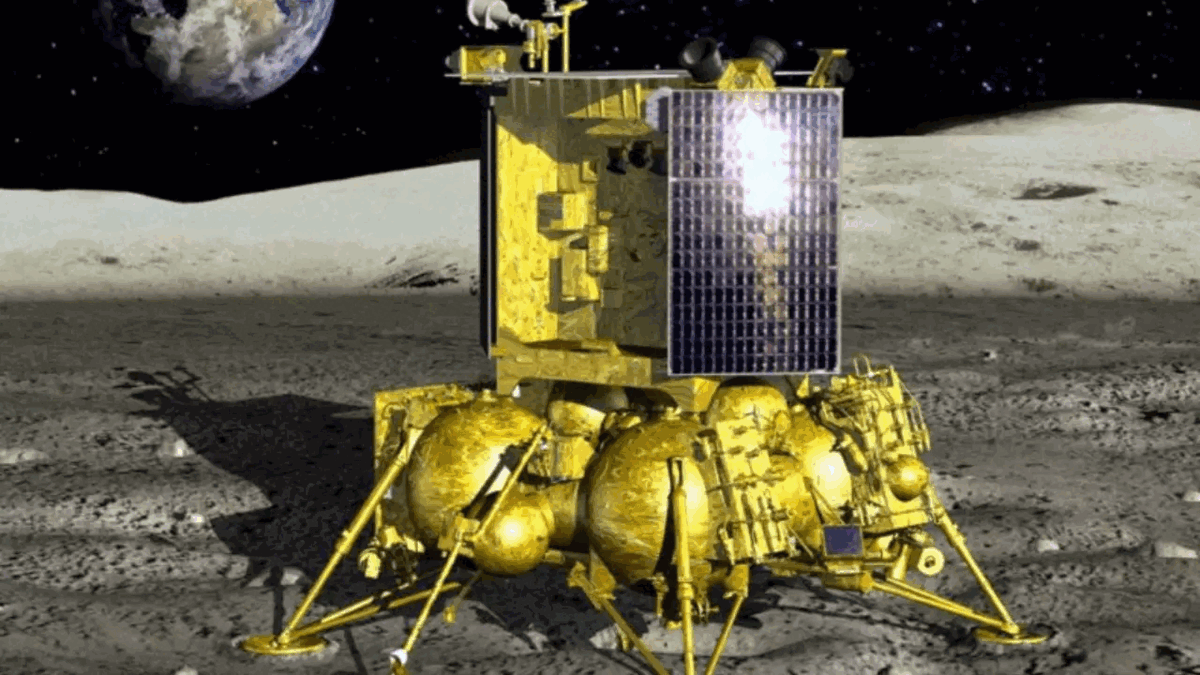World
Moon: Russia’s lunar spacecraft, first in five decades, crashes into moon

[ad_1]
A Russian robotic spacecraft that was headed to the lunar surface has crashed into the moon, Russia’s space agency said on Sunday, citing the results of a preliminary investigation a day after it lost contact with the vehicle. It is the latest setback in spaceflight for a country that during the Cold War became the first nation, as the Soviet Union, to put a satellite, a man and then a woman in orbit.
The Luna-25 lander, Russia’s first space launch to the moon’s surface since the 1970s, entered lunar orbit last Wednesday and was supposed to land as early as Monday. On Saturday, according to Roscosmos, the Russian space agency, the spacecraft received orders to enter an orbit that would set it up for a lunar landing. But an unexplained “emergency situation” occurred, and the orbital adjustment did not occur.
On Sunday, Roscosmos said that measures to find and re-establish contact with the craft had failed, and that it calculated the failure of the adjustment meant that Luna-25 had deviated from its planned orbit and “ceased its existence as a result of a collision with the lunar surface.” An interagency commission would be formed to investigate the reasons for the failure, it added.
Luna-25, which launched on August 11, was aiming to be the first mission to reach the moon’s south polar region. Government space programmes and private companies all over Earth are interested in that part of the moon because they believe it may contain water ice that could be used by astronauts for future space missions.
India will now get the chance to land the first probe in the lunar south pole’s vicinity. Its Chandrayaan-3 mission launched in July, but it opted for a more roundabout but fuel-efficient route to the moon. It is scheduled to attempt a landing on Wednesday. That India may succeed after Russia failed would be a blow to President Putin, who has used Russian achievements in space as part and parcel of his hold on power.
In recent decades, Russia’s exploration of space has fallen a long way from the heights of the Soviet era. The last unqualified success was more than 35 years ago, when the Soviet Union was still intact. The embarrassing nadir came in 2011 with Phobos-Grunt, which was supposed to land on Phobos, the larger of Mars’ two moons, and bring back samples of rock and dirt to Earth. But Phobos-Grunt never made it out of Earth’s orbit after the engines that were to send it to Mars did not fire. A few months later, it burned up in Earth’s atmosphere.
Luna-25 was to have completed a one-year mission studying the composition of the lunar surface. It was also supposed to have demonstrated technologies that would have been used in a series of robotic missions that Russia plans to launch to the moon to lay the groundwork for a future lunar base that it is planning to build with China. But the schedule for those missions – Luna 26, 27 and 28 – has already slipped years from the original timetable, and now there are likely to be further delays, especially as the Russian space programme struggles, financially and technologically, because of sanctions imposed after Russia’s invasion of Ukraine. Russia has struggled to develop new space hardware, especially electronics that reliably work in the harsh conditions of outer space. “You cannot really fly in space, or, at least, fly in space for a long time, without better electronics,” said Anatoly Zak, who publishes RussianSpaceWeb.com, which tracks Russia’s space activities.
The Luna-25 lander, Russia’s first space launch to the moon’s surface since the 1970s, entered lunar orbit last Wednesday and was supposed to land as early as Monday. On Saturday, according to Roscosmos, the Russian space agency, the spacecraft received orders to enter an orbit that would set it up for a lunar landing. But an unexplained “emergency situation” occurred, and the orbital adjustment did not occur.
On Sunday, Roscosmos said that measures to find and re-establish contact with the craft had failed, and that it calculated the failure of the adjustment meant that Luna-25 had deviated from its planned orbit and “ceased its existence as a result of a collision with the lunar surface.” An interagency commission would be formed to investigate the reasons for the failure, it added.
Luna-25, which launched on August 11, was aiming to be the first mission to reach the moon’s south polar region. Government space programmes and private companies all over Earth are interested in that part of the moon because they believe it may contain water ice that could be used by astronauts for future space missions.
India will now get the chance to land the first probe in the lunar south pole’s vicinity. Its Chandrayaan-3 mission launched in July, but it opted for a more roundabout but fuel-efficient route to the moon. It is scheduled to attempt a landing on Wednesday. That India may succeed after Russia failed would be a blow to President Putin, who has used Russian achievements in space as part and parcel of his hold on power.
In recent decades, Russia’s exploration of space has fallen a long way from the heights of the Soviet era. The last unqualified success was more than 35 years ago, when the Soviet Union was still intact. The embarrassing nadir came in 2011 with Phobos-Grunt, which was supposed to land on Phobos, the larger of Mars’ two moons, and bring back samples of rock and dirt to Earth. But Phobos-Grunt never made it out of Earth’s orbit after the engines that were to send it to Mars did not fire. A few months later, it burned up in Earth’s atmosphere.
Luna-25 was to have completed a one-year mission studying the composition of the lunar surface. It was also supposed to have demonstrated technologies that would have been used in a series of robotic missions that Russia plans to launch to the moon to lay the groundwork for a future lunar base that it is planning to build with China. But the schedule for those missions – Luna 26, 27 and 28 – has already slipped years from the original timetable, and now there are likely to be further delays, especially as the Russian space programme struggles, financially and technologically, because of sanctions imposed after Russia’s invasion of Ukraine. Russia has struggled to develop new space hardware, especially electronics that reliably work in the harsh conditions of outer space. “You cannot really fly in space, or, at least, fly in space for a long time, without better electronics,” said Anatoly Zak, who publishes RussianSpaceWeb.com, which tracks Russia’s space activities.
#Moon #Russias #lunar #spacecraft #decades #crashes #moon






